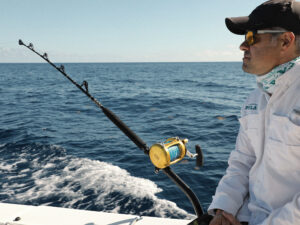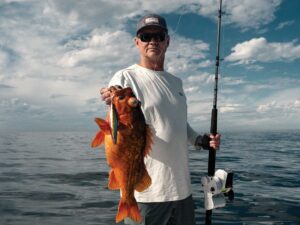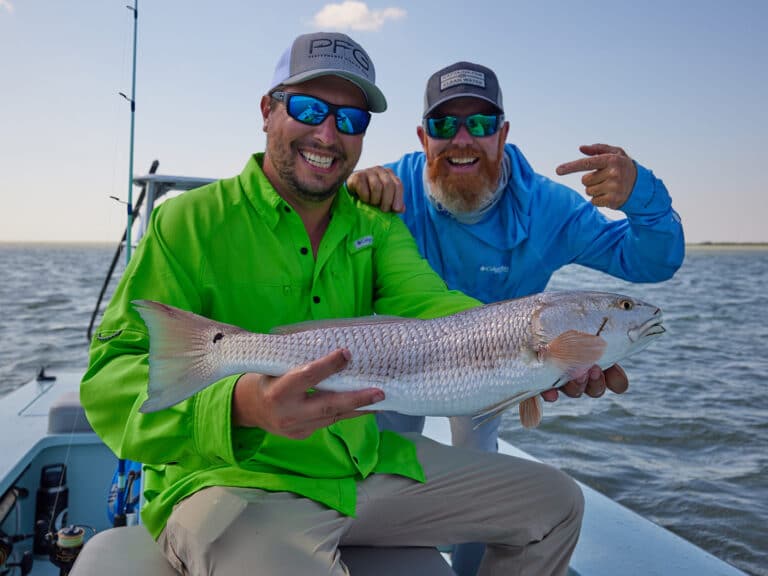Fishing is a sport of learning and evolving. Every skill and technique in your arsenal is an adaptation for situational necessity that makes you a better angler. Here are 16 tried-and-true tricks from the annals of Salt Water Sportman’s 86-year history of helping people catch more fish. Whether you’re a beginner or an old salt, there should be something here for you.
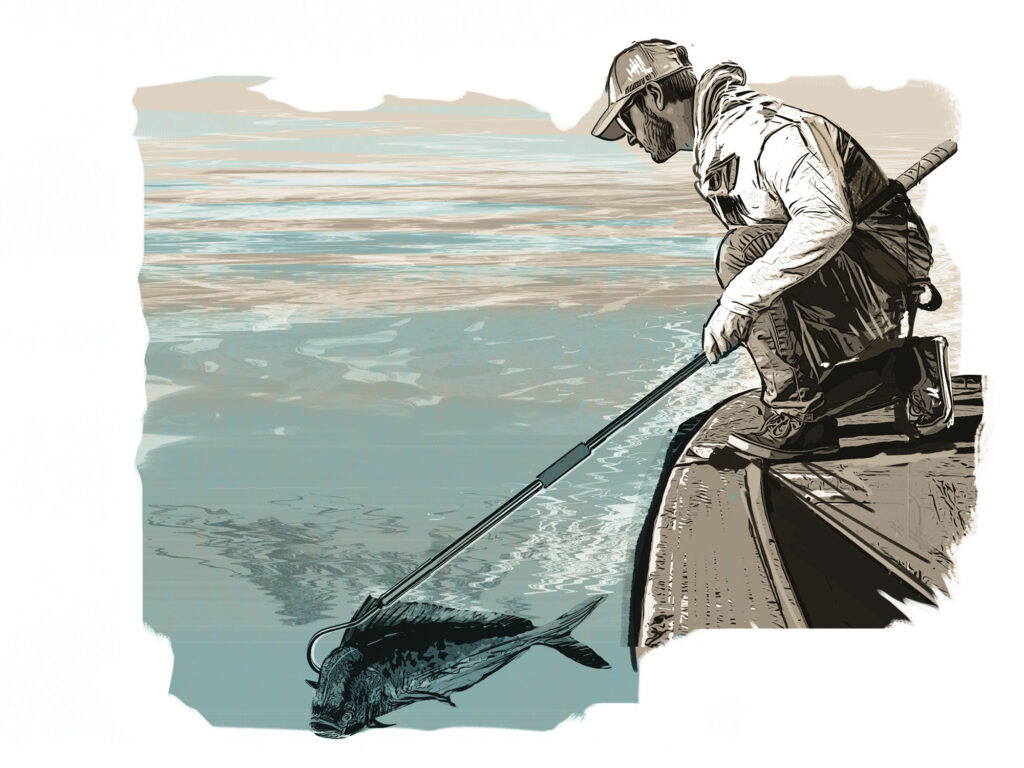
Gaff Like a Pro
Keep the gaff behind the leader to prevent tangles and break-offs if you miss. Reach the gaff hook-down across the back of the fish and aim for the upper shoulder just behind the gill plate to control the fish and minimize damage to the meat. Pull the gaff firmly into the fish and use the momentum to lift and swing it into the boat in a single move. If a fish is spiraling rather than running alongside the boat, hit it when it’s headed toward the boat.
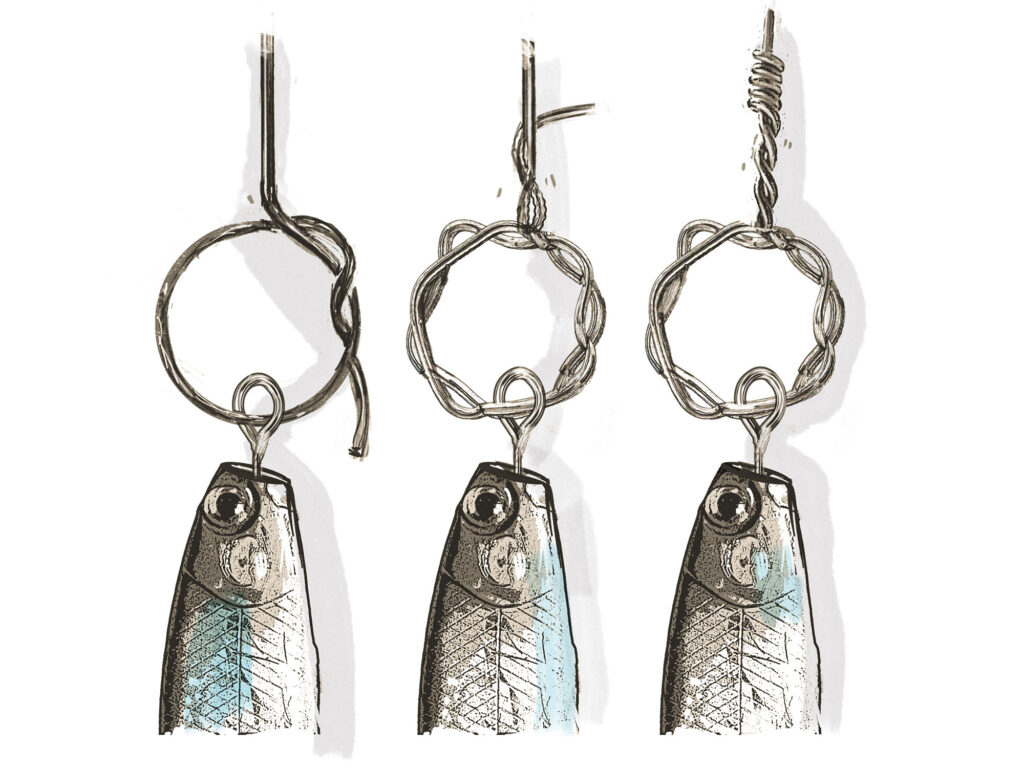
Build a Wire Loop
Toothy critters require wire leaders, but single-strand wire loops collapse and inhibit the action of lures. Rigging a reinforced wire loop allows the lure to swing freely. To do this, form a loop through the lure eye, then wrap the wire around itself numerous times, continuing around the original loop to the starting point. Then position the two strands at the top to begin a haywire twist. Finish the haywire twist and break off the tag end.
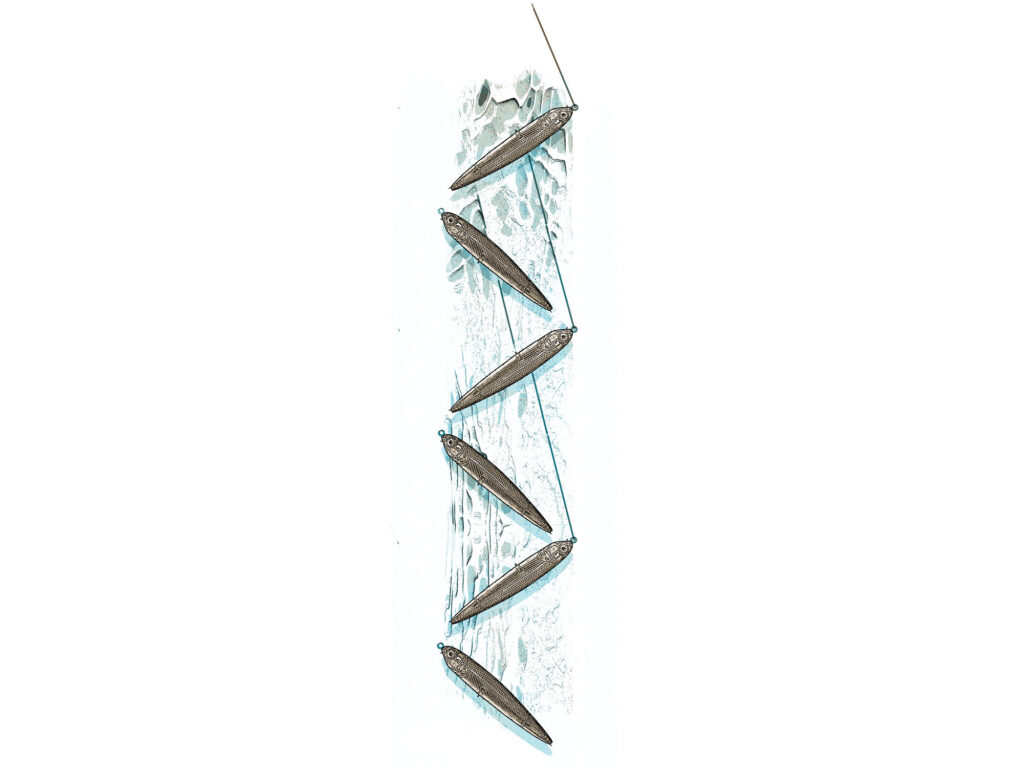
Take the Dog for a Walk
The zigzagging action of a walking topwater lure is irresistible to numerous species. The back-and-forth lateral movements and pauses of the technique keep the lure over the fish longer while mimicking a frantic baitfish. To walk the dog, give the rod tip a short, sharp jerk and then allow the lure to travel sideways on slack line. The next jerk will turn it to travel sideways in the other direction. Start slowly until you get a feel for the timing. Once you find the rhythm, it becomes second nature.
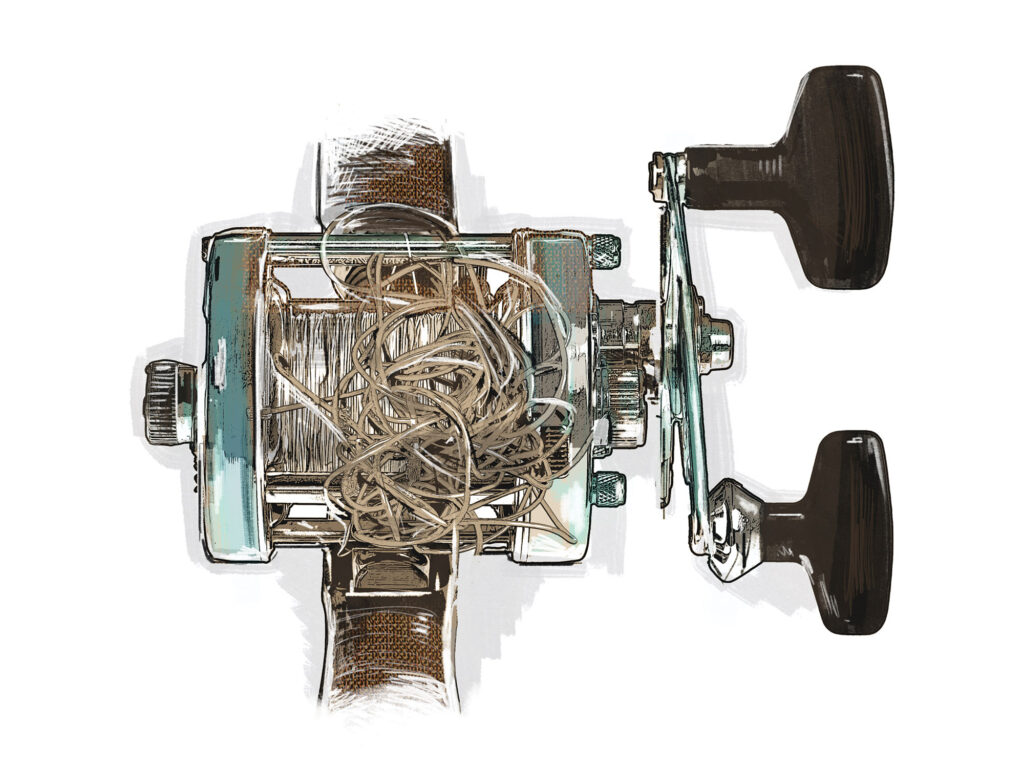
Beating Backlash
Some anglers avoid baitcasters for fear of the dreaded bird’s nest. By adjusting spool tension and braking, even newbies can tune a reel to make long, accurate casts without tangles. Start with the tension knob on the right side of the reel tightened. With the lure tied on and the rod held in front of you, depress the free-spool button. Loosen the tension knob until the lure falls steadily under its own weight. Properly adjusted, the spool should stop spinning when the lure hits the ground. The braking system on the left side plate is for fine-tuning. Longer casts are possible with less tension, but that opens the door for backlashes. Adjust the braking dial to a higher setting to account for reduced tension on the spool. With practice, you’ll be able to loosen things up significantly and control casts by feathering the spool with your thumb.
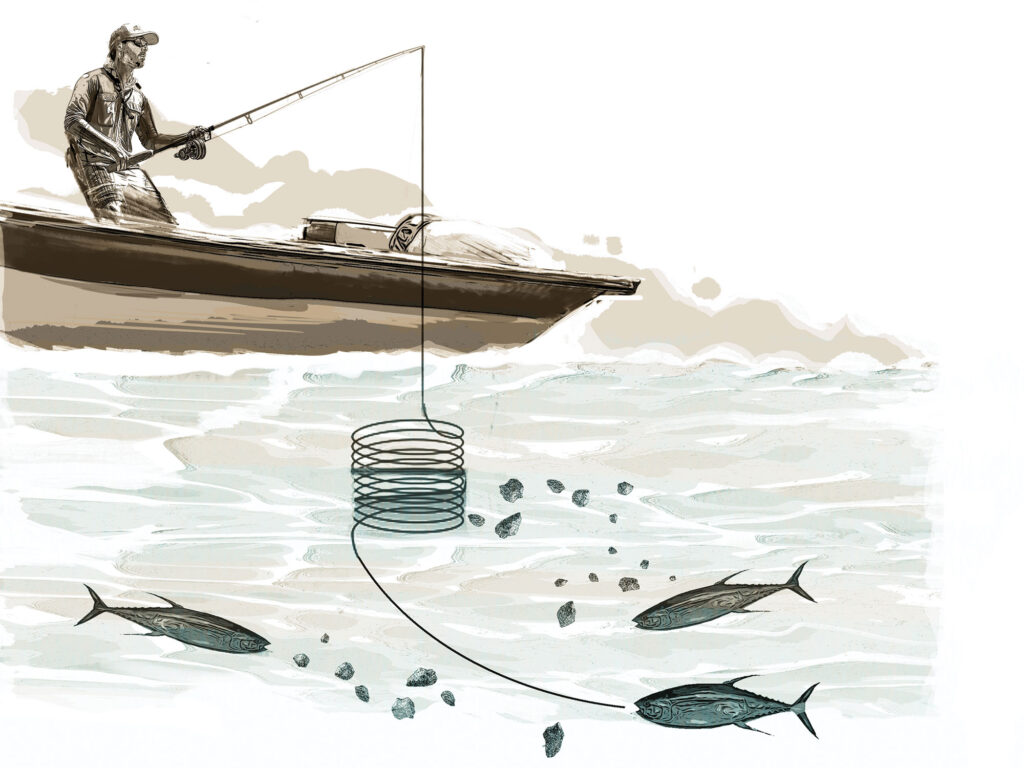
Drift a Chunk
Pulling actively feeding fish out of a chum line might seem like an easy endeavor, but some fish become selective when cut bait is falling from the sky. A natural drift is key when deploying a chunk with a hidden hook to make it look like free food. To do this, pull the line from the rod tip and run it under the index finger of your rod hand, dropping coils of slack line on the water during the drift. The hooked chunk will drift more naturally without resistance from the reel or rod guides. When those coils of line disappear off the surface, release the line from your index finger and prepare for battle.
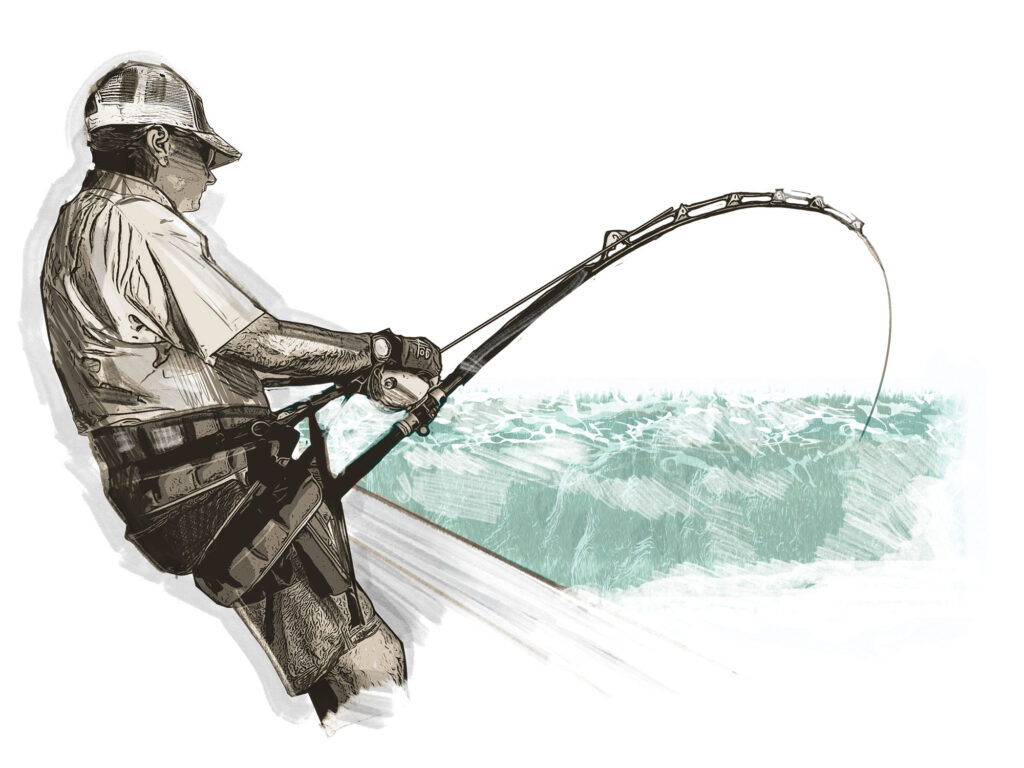
Stand Up and Fight
Stand-up gear provides a fixed anchor point for the rod butt and allows the angler to use their entire body, rather than just their upper body, to battle fish more efficiently. It’s the same familiar pump-and-wind motion, but the gimbal belt and kidney harness serve as a fulcrum where the angler’s leverage comes from the legs and core. The angler bends at the knees and pulls with the arms to lift the rod tip up and put pressure on the fish. Then, while straightening the legs and lowering the rod tip, the angler reels hard to gain line. Get into a rhythm and you’ll discover it’s much easier to fight a fish with your whole body than it is with just your arms and back.
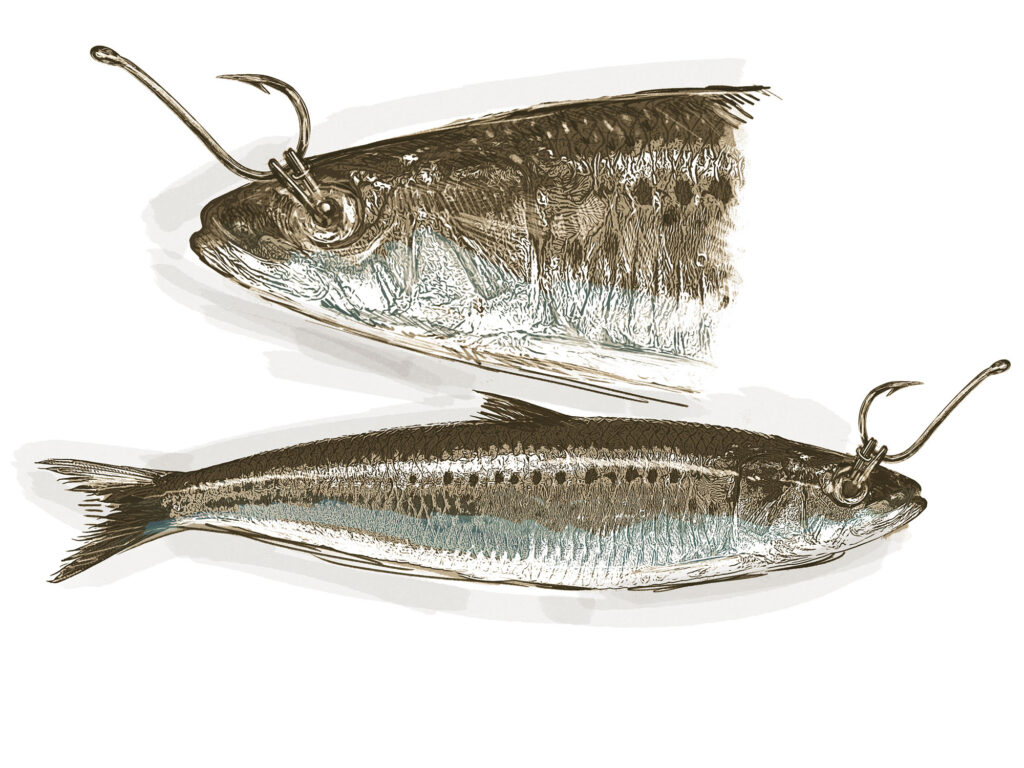
Bridle a Live Bait
Steal some orthodontic rubber bands from your brace-faced teenager (for smaller baits) or buy some purpose-made rigging bands. Use an open-faced rigging needle to thread the rubber band through the bait. Run it through the eye sockets of goggle-eyes, small tuna or bonito, through the nostrils of smaller baits like tinker mackerel and threadfin herring, or just in front of the dorsal fin, depending on the application. Pass the hook point through the two rubber-band loops on each side of the baitfish and remove the rigging needle. Then spin the hook a few times to snug it down to the baitfish, and pass the hook point through the tight space between the bait and bridle to keep it from unraveling. Bridled baits stay lively longer, and the hook is fully exposed for better hook-sets.
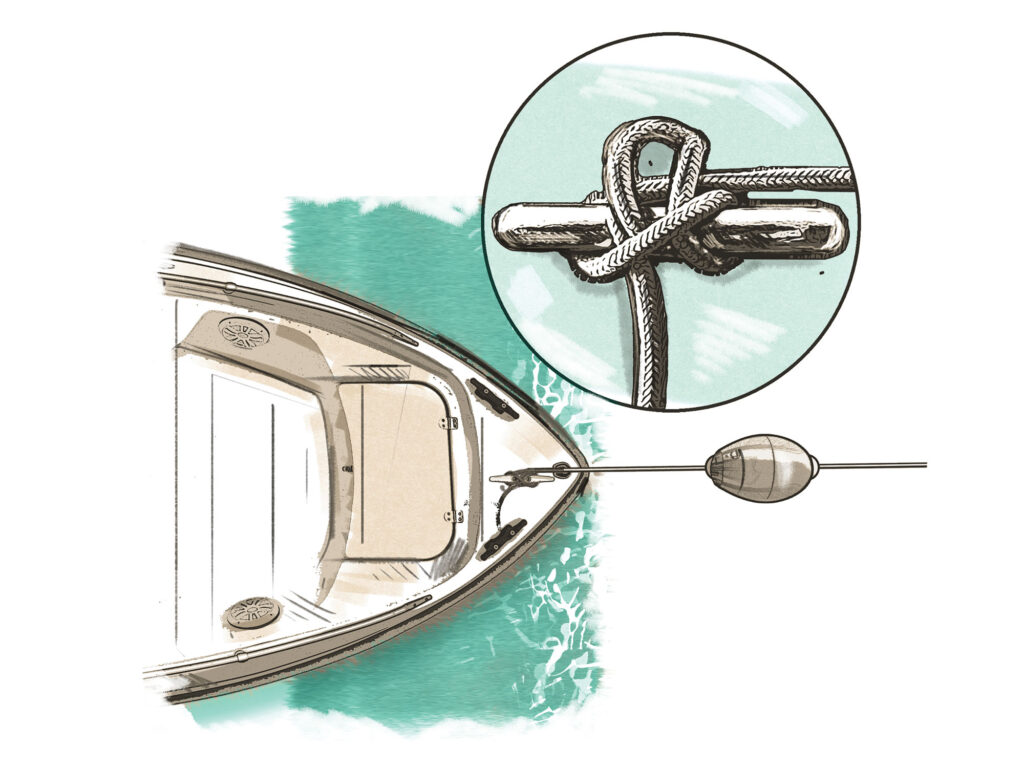
Rig a Quick-Release Anchor
In the age of trolling-motor virtual anchors and shallow-water anchoring systems, a manually deployed quick-release anchor might seem like a relic. Yet anglers who pursue large, shallow-water fish know there’s a place for an old-fashioned quick-release anchor that allows for fast getaways to follow hooked fish. Use a quick-release cleat hitch to secure the anchor line to the boat and thread a buoy on the rode between two stopper knots. After you’ve chased down that big tarpon or shark, you can return to the same spot and your anchor will be waiting for you.
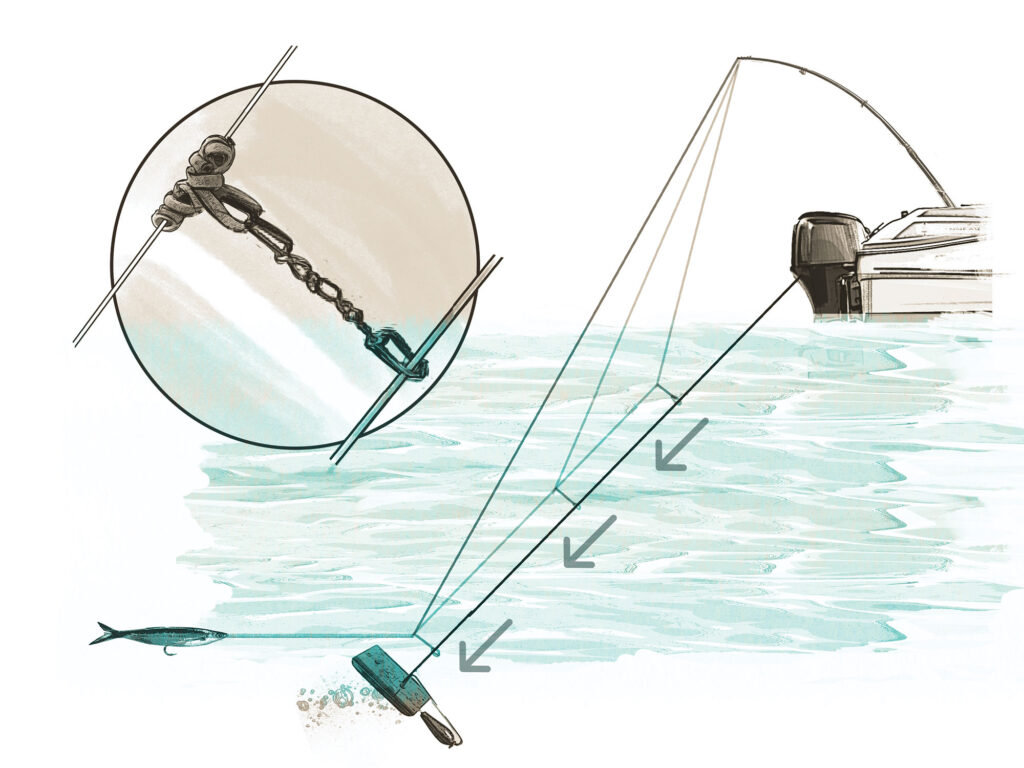
Troll Deep With a Planer
A planer is a simple way to troll baits or lures deeper when the surface bite isn’t happening. While idling forward, set the planer to the desired depth secured with 300-pound-test mono tied off to a transom cleat. Drop your bait back and then secure a rubber band to the fishing line with a Prusik knot. Clip a double snap swivel, one side to the rubber band loop and the other to the planer tether. The drag from the water will pull the bait down to the depth of the planer, and the rubber band will break off the main line when a fish hits.
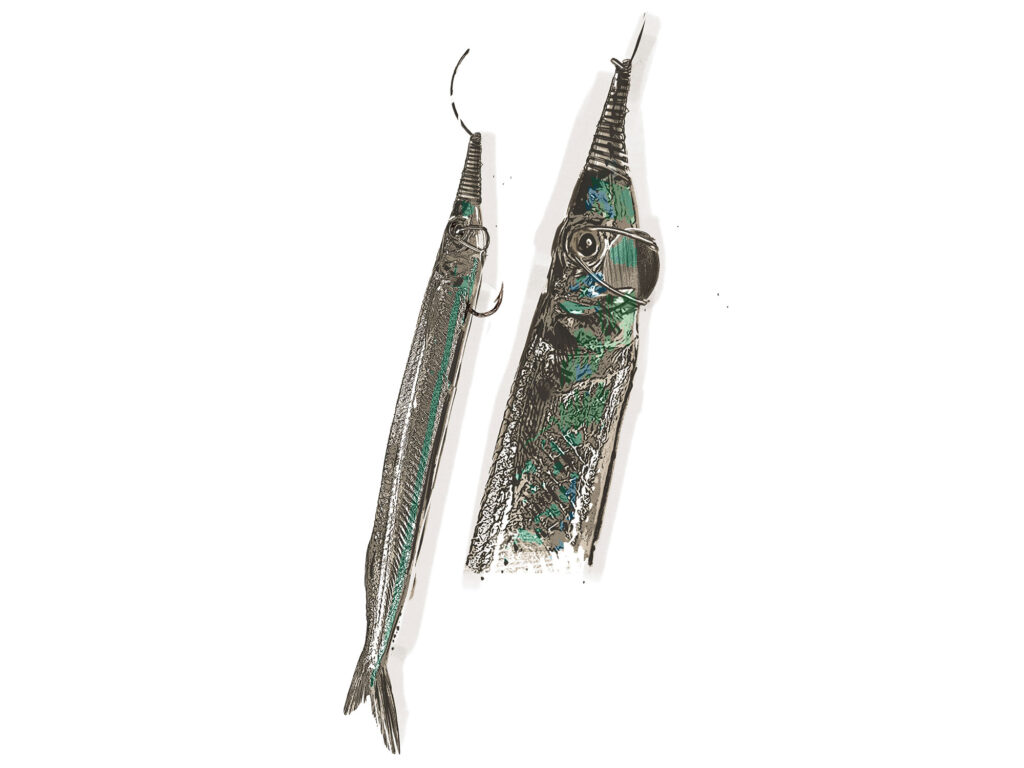
Rig a Swimming Bait
Swimming baits have a natural swimming action in your trolling spread, and you can make them out of ballyhoo, mullet and other baitfish. Place the hook as you would when rigging a skip bait, but an inch farther back, behind the eye sockets. Thread an egg sinker on the leader and slide it down to the bait. Next, run copper wire through the eye socket and use it to snug the weight under the chin. Bind the leader into the jaws with wire.
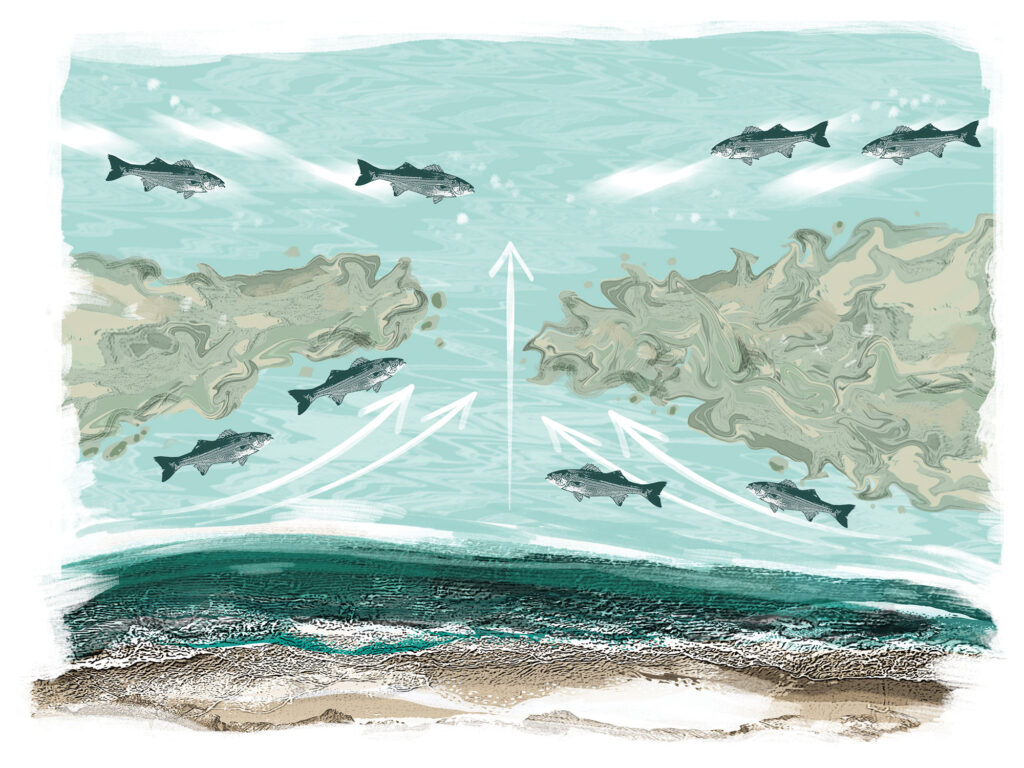
Read Any Surf
The main facets to reading the sand surf is to identify deep water and shallow water. The sandbar is where you see waves break and whitewater where it is shallow. Deeper water where fish usually stage is in the cuts between sandbars and in the slough/undertow area inside along the surf line, identified by noncrashing waves. Generally, fish stage in the deeper area and just inside the sandbar. If there are rocks in the deeper water, gamefish will localize there even more. Low tides allow anglers to wade on the sandbar and cast out farther into the ocean. —Nick Honachefsky
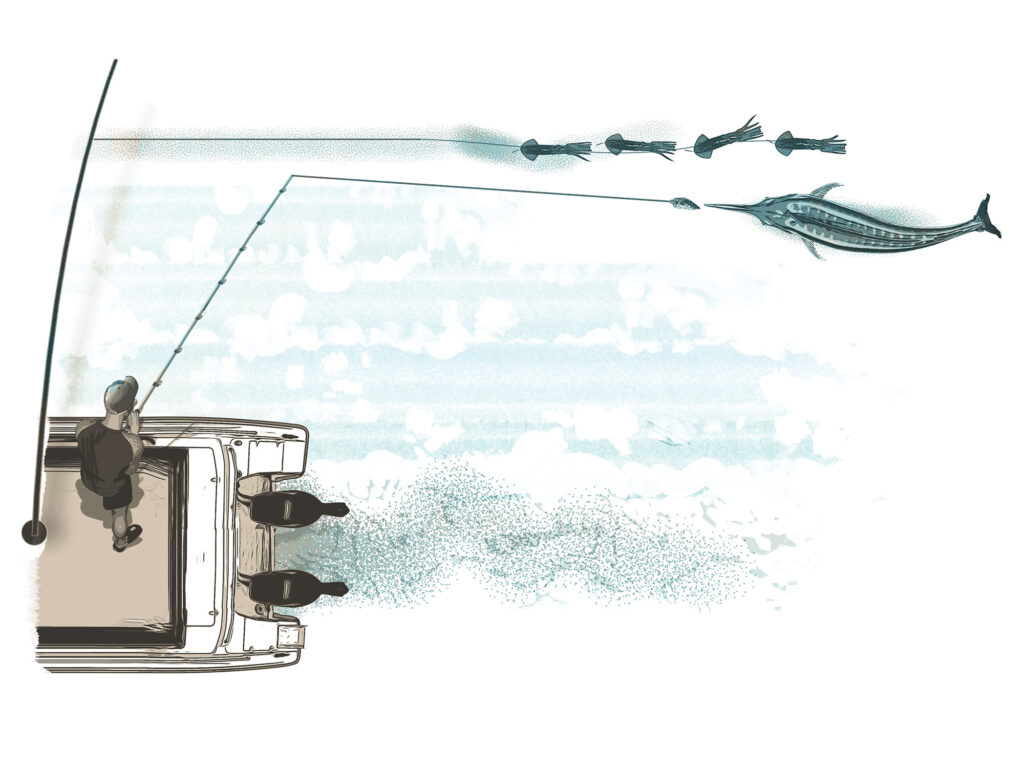
Pitch Perfect
Trolling teasers increases the visibility of an offshore spread, but when a fish homes in on a daisy chain rather than a bait with a hook, it’s time for the angler to get in the action. Always keep a pitch bait rigged and ready. When a fish comes up on a teaser, drop in the pitch bait and let it drift back to the trailing fish. Billfish and other big game often turn on this easier prey item. On the initial strike, be ready to feed the fish by freeing the spool and fingering it lightly to prevent backlash. When the fish takes the bait and turns, ease the drag lever forward, wind down and hold on.
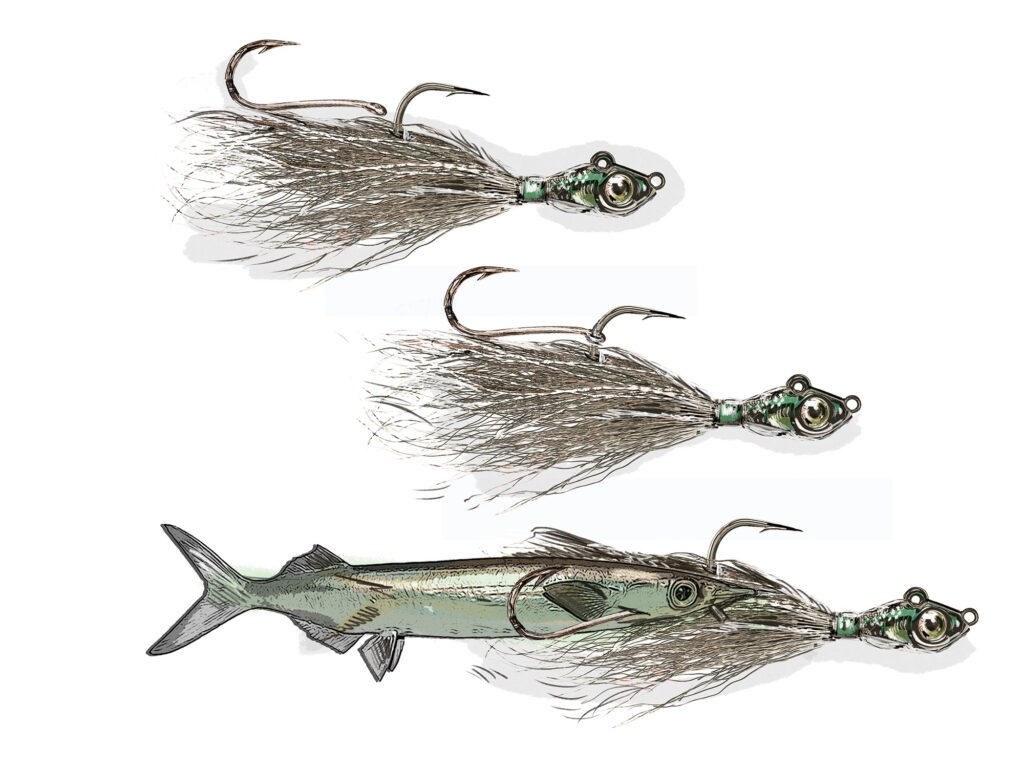
Tandem-Hook a Bucktail
Bucktails catch almost everything that swims, and adding a dead bait to your jig is an added enticement. But what do you do when short strikers are stealing your bait? Add a trailer hook. Slide a second hook eye over the jig hook, pointing up, and open the eye slightly with pliers if necessary. Run the jig hook through the head of the bait and the trailer hook though the body. Be sure the bait pulls from the head so it runs straight while deep-jigging or casting.
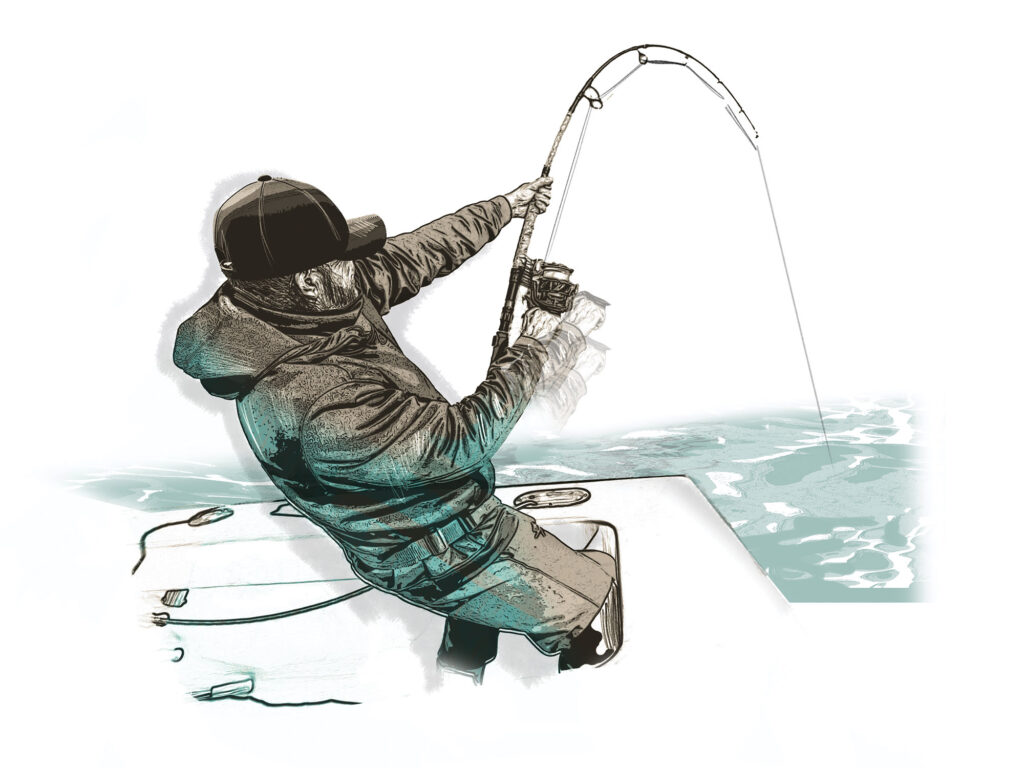
Don’t Be a Drag
Reeling against the drag while fishing with a spinning reel can lead to severe issues, such as line breakage, line twists, wind knots or losing your catch. When a fish pulls, the drag system is designed to release line smoothly, preventing line breakage or rod damage. By allowing the drag to function as intended, you maintain control and increase your chances of successfully landing the fish without creating future line issues. —Capt. Michael Okruhlik
Read Next: Tips to Help You Land Fish Faster
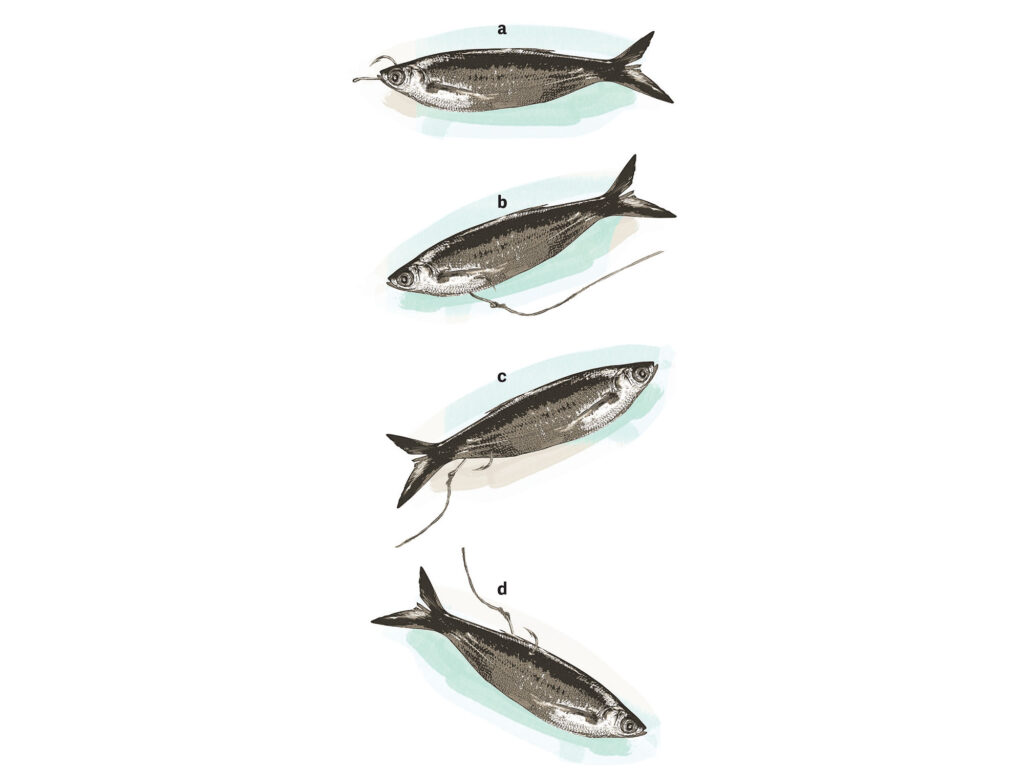
Steer a Live Baitfish
A. The Upper Jaw: The default method for hooking a live baitfish for many applications is inside of the mouth through the upper jaw. This allows freedom of movement and often keeps the bait alive for a longer period.
B. Make ’Em Swim Down: A free-lined live bait generally goes where it wants, but it can be steered. When fish are down in the water column and you don’t want to add weight, hook the bait low and forward. This hook placement encourages a bait to swim deeper.
C. Make ’Em Swim Up: When fishing on bottom with a weighted setup like a fish-finder rig, a baitfish struggling to swim up will get a lot of attention from predators. That’s exactly what it does when hooked near the bottom of the tail.
D. Through the Dorsal: Another way to force a baitfish to swim down is by hooking it through the back in front of the dorsal fin. Under a kite or float, the bait will swim down frantically against the pressure of the line.
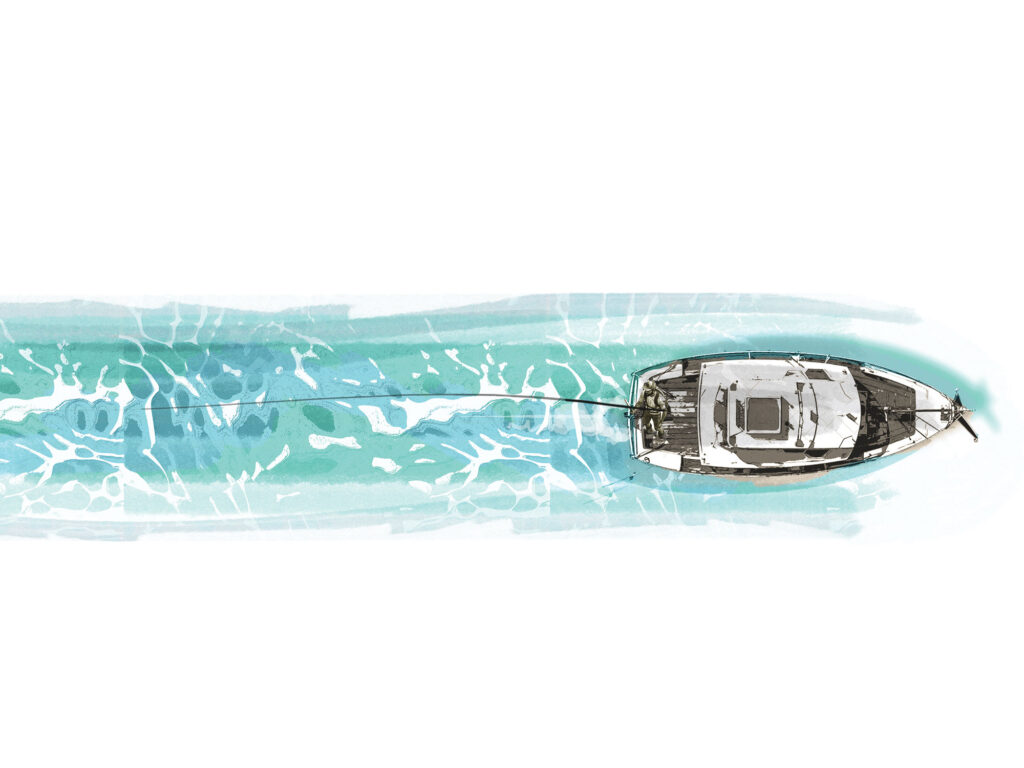
Stop Line Twist
Spinning reels add a small amount of twist to the line every time the bail turns. Over time, accumulated twists make line difficult to manage. To remove twist from the line, cut off the terminal tackle, open the bail, pull line off the spool, and feed it out through the rod eyes from a moving boat or into a strong current from shore. The line will begin pulling itself off the reel once a portion of it is in the water. Pay out more line than you’ve been fishing with and let the friction of the water untwist the line. You’ll be ready to rerig after a few minutes.

